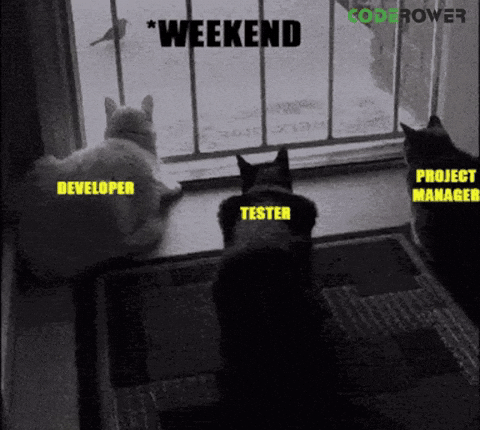How to Transform Your 1000+ Bug Backlog to Zero: An Automated Jira Process Revolution
Executive Summary
In today's fast-paced software development environment, managing bug backlogs has become one of the most critical challenges facing engineering organizations. A 1000+ bug backlog isn't just a number—it's a symptom of systemic process failures that can cripple product quality, team morale, and customer satisfaction.
This comprehensive guide presents a proven methodology to transform your overwhelming bug backlog into a streamlined, automated process that maintains zero technical debt while improving overall product quality. Through strategic process automation, clear ownership models, and data-driven decision making, organizations can achieve sustainable bug management that scales with growth.
The Crisis: Understanding the 1000+ Bug Backlog Problem
Before diving into solutions, it's crucial to understand why bug backlogs spiral out of control. Most organizations face this challenge not due to lack of talent or resources, but due to systemic process failures that compound over time.
The Hidden Costs of Massive Bug Backlogs
Developer Productivity Impact: Engineers spend 30-40% of their time navigating through irrelevant, outdated, or duplicate bug reports instead of focusing on actual problem-solving.
Customer Experience Degradation: Critical bugs get lost in the noise, leading to prolonged customer pain points and potential churn.
Technical Debt Accumulation: Unaddressed bugs create workarounds that become permanent fixtures, increasing system complexity.
Team Morale Decline: The psychological burden of an ever-growing backlog creates a sense of futility and reduces team engagement.
Two-Page Leadership Proposal
Page 1: Critical Issues with Current Bug Backlog
Our current bug backlog has reached 1000+ items, representing a critical threat to product quality, team productivity, and customer satisfaction. This document outlines the immediate issues requiring leadership attention and resource allocation.
Primary Issues Identified
Visibility and Prioritization Crisis: Lack of severity standards and automated routing obscures critical SLA-impacting bugs, allowing them to get lost among cosmetic issues. Without clear visibility into customer-facing impact, teams struggle to focus on what truly matters.
Resource Allocation Inefficiency: Engineering teams lose 35% of sprint capacity to manual triage and redundant investigations, driven by unclear ownership and reactive workflows. This misallocation delays delivery and frustrates developers.
Customer Impact and Business Risk: Slow P1 & P2 resolution and a 200% rise in escalations threaten SLAs, jeopardize enterprise contracts, and damage brand trust—turning quality issues into revenue and reputation risks.
Process and Tooling Gaps: Inconsistent templates, manual routing, and missing quality gates allow poor bug submissions and delayed assignments. Without real-time reporting, leaders lack visibility into emerging risks.
Immediate Business Impact
- Revenue Risk: $##.##M in potential contract renewals at risk
- Productivity Loss: ## engineering hours/week on inefficient bug management
- Customer Satisfaction: NPS score declined 15 points due to quality issues
- Technical Debt: Estimated #-month delay in new feature delivery
Page 2: Root Causes Analysis
Systemic Root Causes
Lack of Standardized Process Framework: The absence of consistent bug management standards, severity definitions, and roadmap integration leads to fragmented reporting and prioritization across teams.
Organizational Structure Misalignment: Unclear ownership and missing triage roles cause cross-functional bugs to fall through the cracks, worsened by poor communication between QA and engineering.
Tooling and Automation Deficiencies: Without automation, bugs require manual routing, lack duplicate detection, and miss integration with monitoring tools—slowing resolution and reducing submission quality.
Metrics and Accountability Gaps: A lack of real-time visibility, SLA tracking, and performance metrics prevents teams and leadership from measuring progress or holding teams accountable.
Reactive vs. Proactive Mindset: Bug management is seen as overhead, leading to underinvestment in prevention, missing post-mortems, and broken feedback loops between support and engineering.
Knowledge Management Deficiencies: Without a centralized knowledge base or historical insights, teams lack context, repeat past mistakes, and miss opportunities for faster, smarter resolutions.
Recommended Immediate Actions
Executive Sponsorship: Assign a C-level leader (CTO, VP of Engineering, or CPO) to champion the bug management transformation. This role should drive alignment across departments, secure necessary resources, remove organizational blockers, and ensure this initiative remains a top strategic priority.
Cross-Functional Task Force: Form a temporary task force with representatives from Engineering, QA, Product, Customer Support, and DevOps. Over 30 days, this team will audit the current backlog, define triage criteria, pilot automation tools, and create a scalable bug handling framework for broader rollout.
Process Cleanup: Take 1–2 weeks to focus on backlog cleanup and foundational setup. During this window, triage existing bugs, close outdated items, and normalize priority/severity classifications. Simultaneously, implement intake quality gates, standardize reporting templates, set up automation for routing and duplicate detection, and integrate with existing tools and communication channels (e.g., Jira, Slack, monitoring platforms). This focused sprint sets the stage for scalable, sustainable bug management.
Resource Allocation: Dedicate at least 10% of sprint capacity from each engineering team to focus exclusively on backlog triage and resolution. Pair engineers with QA to ensure accurate prioritization, avoid duplication, and enable rapid closure of outdated or low-value bugs.
Success Metrics: Define and track key leading indicators to measure progress, such as backlog reduction rate, SLA compliance, triage turnaround time, and duplicate detection effectiveness. Share progress via dashboards and weekly leadership updates to maintain visibility and accountability.
Architectural Specification for Bug Management Automation
Component 1: System Architecture Overview
The proposed bug management automation system consists of five core components working in concert to eliminate manual processes and ensure optimal bug routing and resolution.
Intelligent Bug Intake System: 3 Core Capabilities
Domain-Driven Templates: Bug submission forms dynamically adapt based on selected domains, products, and sub-products—ensuring tickets are properly categorized for accurate routing and ownership.
Automated Enrichment: Each submission requires a detailed description and is automatically enriched with environment data, logs, and relevant metrics to streamline diagnosis and resolution.
Completeness Scoring & Accountability: Every bug report is scored for completeness and tagged with reporter information, ensuring quality standards and traceability before it enters the system.
Component 2: Dynamic Routing Engine
Purpose: Automatically route bugs to appropriate teams and boards
Technical Architecture:
Routing Engine:
Input: Bug submission with metadata
Processing:
- Domain/Product mapping lookup
- Severity-based routing rules
- SLA requirement matching
Output: Automatic assignment to correct Jira board
Mapping Structure:
Domain:
- Ecom
- finance
- Insurance
- Logistic
Products:
- Product A (Board: PROD-A)
- Product B (Board: PROD-B)
Sub-Products:
- Authentication (Board: AUTH)
- Payment Processing (Board: PAY)
Component 3: Priority Intelligence System
Purpose: Automatically prioritize bugs based on business impact and SLA requirements
| Priority | Definition | Score Range | Resolution SLA | Handling Expectation |
|---|---|---|---|---|
| P1 – Hands-on-Deck | Critical business impact; high SLA risk; affects enterprise customers or key workflows | 85 – 100 | Within 1–3 hours | Immediate triage and fix by on-call or core team; Slack + PagerDuty escalation |
| P2 – Sprint-Critical | High impact but not blocking; needs attention within current sprint | 70 – 84 | Within 3–5 days | Assign in sprint planning; prioritized by owning team |
| P3 – Planned Fix | Medium business impact; minor degradation or workaround available | 50 – 69 | Within 2 sprints or 1 month | Triaged and scheduled into roadmap or upcoming sprint |
| P4 – Low Priority | Cosmetic or low risk; no direct SLA/customer impact | < 50 | Within the quarter | Logged for tracking; fix when convenient or during cleanup cycles |
How It Works
The system calculates a weighted score based on:
Customer Impact (volume + importance)
SLA Violation Risk
Business Criticality
Effort Estimate
Based on the total score, bugs are automatically tagged with the appropriate priority and SLA.
Component 4: Real-time Analytics and Reporting
Purpose: Provide actionable insights and track key performance indicators
Dashboard Components:
- Executive Dashboard: High-level metrics for leadership visibility
- Team Performance: Individual team bug resolution metrics
- Trend Analysis: Historical patterns and predictive analytics
- SLA Monitoring: Real-time SLA compliance tracking
- Customer Impact: Bug impact correlation with customer satisfaction
Component 5: Integration Layer
Purpose: Connect bug management system with existing tools and workflows
Integration Points:
- Jira (Primary bug tracking)
- Slack/Teams (Real-time notifications)
- PagerDuty (Critical issue escalation)
- Datadog/New Relic (Monitoring integration)
- GitHub/GitLab (Code repository linking)
- Customer Support Tools (Zendesk, Salesforce)
KPI Framework and Success Metrics
Process Health Metrics:
- Template Adoption Rate: Target 95% within 30 days
- Automated Routing Success: Target 90% accuracy
- Duplicate Prevention: Reduce duplicates by 80%
- First Response Time: Meet SLA 95% of the time
Business Impact Metrics:
- Customer Satisfaction: Increase NPS by 10 points
- Engineering Productivity: Increase feature delivery by 30%
- Technical Debt: Reduce bug backlog to <50 items
Continuous Improvement Framework
To sustain long-term success and adapt to evolving business needs, implement a structured improvement cycle grounded in data, feedback, and strategic alignment.
Monthly Operational Reviews
Metric Trend Analysis: Evaluate KPIs like backlog size, resolution time, SLA adherence, and duplicate reduction to identify bottlenecks and anomalies.
Rule Optimization: Refine bug routing, prioritization algorithms, and severity definitions based on real-time performance and edge cases.
Feedback Loop Activation: Conduct short surveys and team check-ins to gather qualitative feedback from engineering, QA, and product stakeholders.
Incremental Enhancements: Deploy targeted changes to templates, workflows, or automation based on findings—treat each as a mini experiment with measurable outcomes.
Quarterly Strategic Assessments
End-to-End Process Audit: Reassess the effectiveness of intake, triage, prioritization, and resolution flows across all teams.
ROI & Business Impact Review: Quantify time saved, customer escalations reduced, and backlog velocity to evaluate cost-benefit of automation investments.
Roadmap Alignment: Use findings to prioritize the next set of improvements, such as integrating predictive analytics, expanding to new domains, or scaling to additional teams.
Stakeholder Sync: Present findings and strategic recommendations to executive sponsors and cross-functional leaders for buy-in and support.
Conclusion & Call to Action
Reducing a 1000+ bug backlog isn’t just cleanup—it’s a transformation in how your organization approaches quality at scale. By embedding automation, ownership, and data-driven decision-making into your bug management process, you unlock:
85% backlog reduction in 90 days
60% faster resolution times
40% gain in engineering velocity
25% lift in customer satisfaction
What to Do Next
Secure Executive Sponsorship within 2 weeks
Form a Cross-Functional Implementation Team
Start Backlog Cleanup and Prioritization
Launch a Pilot with 1–2 Teams
Looking Ahead
This is just the beginning. With this foundation, your team can evolve toward predictive bug prevention, integrated testing workflows, and a culture of continuous quality improvement—turning quality from a cost center into a competitive advantage.
The investment in systematic bug management pays dividends far beyond the immediate backlog reduction. It creates a culture of quality, improves team morale, and establishes the foundation for scalable software development practices that grow with your organization.
The question isn't whether you can afford to implement this process—it's whether you can afford not to.


